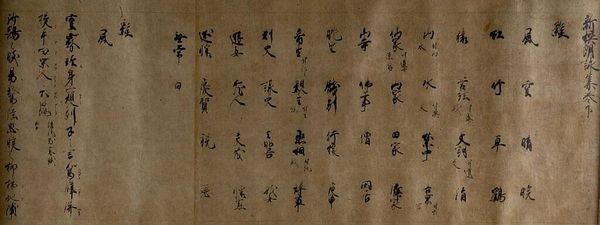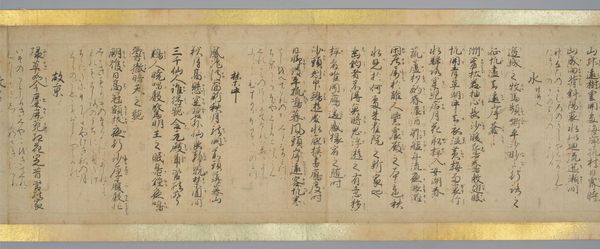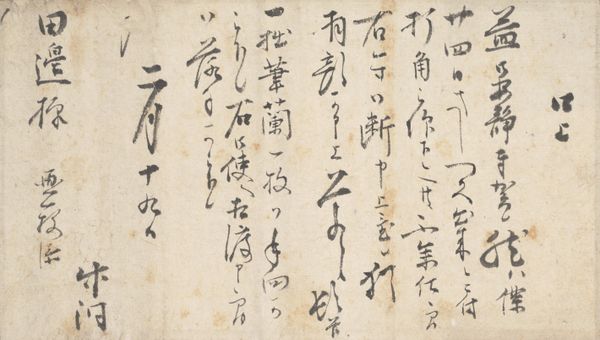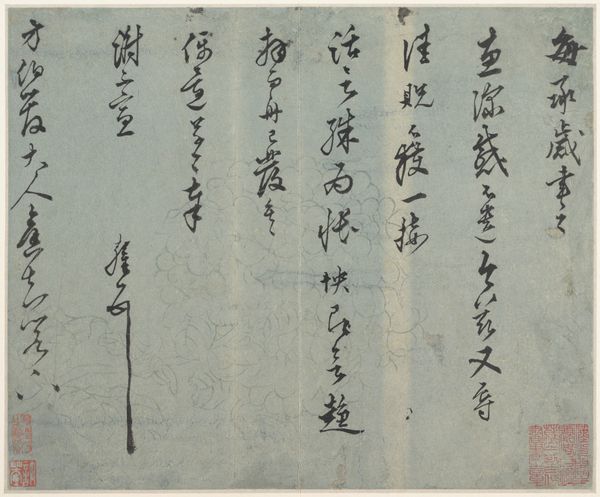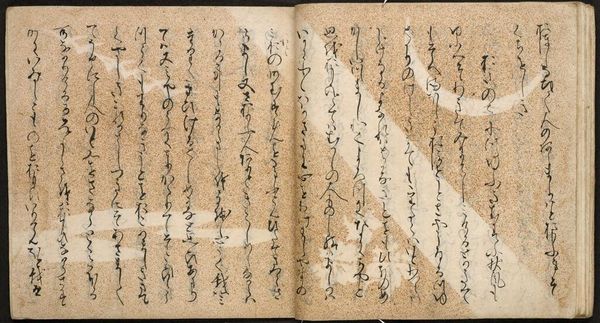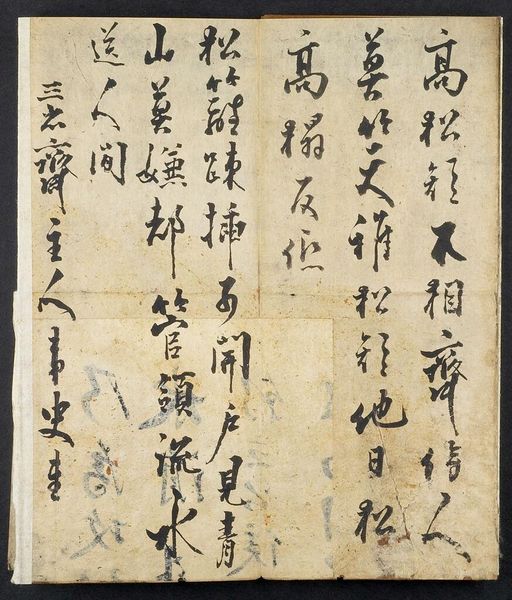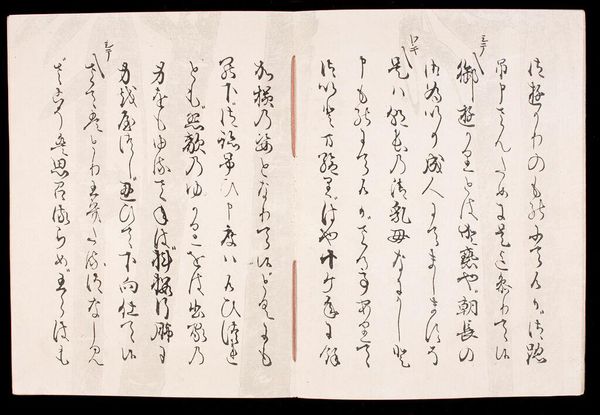
Compilation of Waka Poems and Chinese Verses for Recitation (Shinsen rÅeishÅ«) by Fujiwara no Mototoshi (d. circa 1142) c. mid 13th century
0:00
0:00
Dimensions: H. 26.4 cm (10 3/8 in.)
Copyright: CC0 1.0
Curator: We’re looking at an early 12th-century scroll, "Compilation of Waka Poems and Chinese Verses for Recitation," attributed to Monk Jien, which resides here at the Harvard Art Museums. Editor: It's like a dance of whispers on aged paper! The ink bleeds stories, a landscape of characters flowing like a secret river. Curator: These recited poems, or rōeishū, were a crucial part of courtly life, reflecting cultural ideals and shared aesthetics. Think of them as the pop songs of the Heian period. Editor: Pop songs, huh? I imagine them sung at twilight, maybe with sake and shared glances. There’s a wistful, almost melancholy air about it, don’t you think? Curator: Absolutely, and that air wasn’t accidental. The elite social circles used poetry to create and solidify networks of power and prestige. Editor: So, beauty as a form of social currency. Still, looking at it, you feel the echoes of those voices, the shared human experience across centuries... Makes my heart ache a little. Curator: Indeed. It brings into focus how aesthetic practices are so often deeply entwined with social and political forces. Editor: Right! It’s lovely and… complicated.
Comments
No comments
Be the first to comment and join the conversation on the ultimate creative platform.
